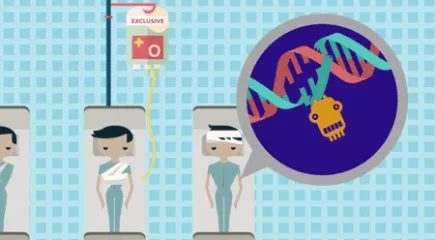- | Healthcare Healthcare
- | Expert Commentary Expert Commentary
- |
Affordable Care Act's Latest Challenge
For a detailed perspective on the latest case, OUTLOOK turned to health care policy expert Robert Graboyes, a scholar at the Mercatus Center at George Mason University in Arlington, Virginia.
The following is a Cobank interview with Robert Graboyes.
Businesses across the United States have had to scramble over the past couple of years to keep up with changes in health care legislation. The Affordable Care Act of 2010 – a.k.a. “Obamacare” – imposed stringent new requirements on employers, requiring that companies with 50 or more full-time employees provide a minimal level of coverage to their workers. The law also required all Americans to have insurance, extended subsidies to lower-income people in order to make health insurance more affordable, and established a network of state and federal “exchanges” where people can purchase insurance and obtain the subsidies.
Obamacare survived a challenge in the U.S. Supreme Court in 2012, and today, millions of Americans receive coverage through government-run exchanges. But now it is before the Court again – this time over the legality of subsidies that the law depends on to be economically viable. A ruling from the Court should come in June.
For a detailed perspective on the latest case, OUTLOOK turned to health care policy expert Robert Graboyes, a scholar at the Mercatus Center at George Mason University in Arlington, Virginia. An outspoken critic of the health care law, and of the various conservative counterproposals, Graboyes says a ruling by the Court against Obamacare will likely cripple the law and cause significant turmoil for the government, businesses and citizens alike.
OUTLOOK: Remind us of the key components of the Affordable Care Act.
Robert Graboyes: The ACA was designed to reduce the number of uninsured people in the U.S. by roughly half. Of the newly insured, around half would get coverage through Medicaid; the other half would purchase private policies – some through the new exchanges.
The ACA has three primary pieces: 1) a requirement that everyone have insurance – called an individual mandate – or pay a tax in lieu of insurance, 2) government subsidies for people whose income is below a certain threshold, and 3) a requirement that employers with 50 or more full-time employees (or full-time equivalents) pay penalties for any of their employees that receive subsidies, which is called the employer mandate.
There are other key provisions of the law as well. Guaranteed issue means that insurance companies cannot refuse to insure anyone because of a pre-existing condition. Modified community rating means insurance companies can’t charge higher premiums just because someone is already sick or deemed to be high-risk.
OUTLOOK: In your opinion, how is the law faring now?
RG: Other than “more people with insurance,” the law’s goals were never clearly stated, so there are few objective metrics on which to judge it. More are insured, but there’s no increase in supply of health care to meet any new demand. The subsidies, the exchanges, the tax aspects are all in disarray. Some people get better coverage and others worse. It makes some people better off financially and others worse off. It likely improves health for some and worsens it for others. By none of these criteria do the winners clearly outnumber the losers. In sum, the law redistributes wealth and health at enormous cost.
OUTLOOK: What have been some of the big problems with implementation?
RG: A big chunk of the ACA was intended to operate through a series of state-run online insurance exchanges, which would serve as marketplaces where people could compare and purchase policies from different health care providers. Residents of states that chose not to establish a state exchange could review and purchase policies from federal exchanges (i.e., Healthcare.gov). The law’s authors anticipated that most states would build their own exchanges. However, 36 declined from the start. Oregon – which spent $300 million on its exchange and never managed to enroll a single person – has now flipped to make it 37 states in the federal program. Clearly, the authors of the law were surprised to find that most states did not establish their own exchanges.
